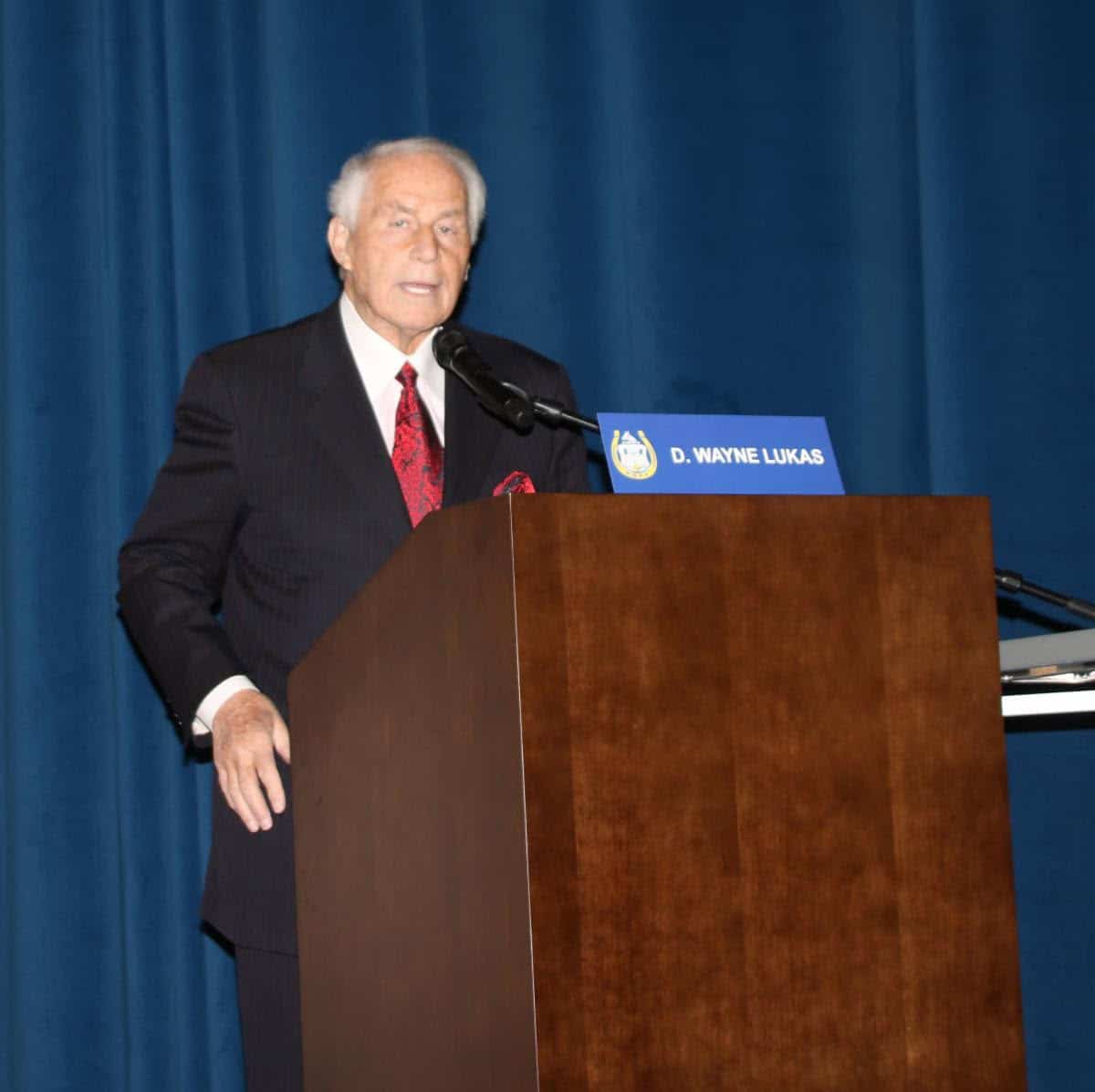Detection of New Synthetic Drug Disturbing
Paulick Report
An announcement by the Association of Racing Commissioners International that the New York Equine Drug Testing Program confirmed the first incidence of a particular synthetic opioid in a racehorse was met with surprise and frustration. The finding of the drug, called AH-7921, may be unsettling, but experts say the substance is nothing new, and it isn’t likely to become the next big thing with cheaters.
First created in the 1970s, AH-7921 is a cousin of morphine that was engineered and patented by pharmaceutical company Allen & Hanburys (hence the AH in the name). Like morphine, it was developed and tested for its painkilling properties, but ultimately was not approved for use in humans or animals due to its addictive properties.
Research released this year by the Japanese Association of Forensic Toxicology suggests that AH-7921 is thought to be several times stronger than codeine and at least as strong as morphine. Since it was never approved for legitimate medical use, it’s now available only as a research chemical and has been sold online for about three years, which has allowed addicted human users to gain access to the substance. The drug is believed to have caused 16 deaths in the European Union and Norway from December 2012 to September 2013 and several cases of non-fatal severe toxicity. Interestingly, Japanese researchers have discovered the substance inside synthetic cannabis sold in that country. Research suggests that mixing AH-7921 with other psychotropic drugs could increase risk of seizure and death considerably.
The drug’s painkilling tendencies in people may or may not carry over to horses, however.
Like morphine, AH-7921 is a mu receptor agonist, meaning it works on the mu receptors in the brain. Dr. Richard Sams, laboratory director at LGC Sport Science Laboratory in Lexington, Ky., said recent research indicates that horses probably have fewer mu receptors in their brains (or less sensitive receptors) than humans and other animals, so morphine and other opioids may not pack the same punch with horses.
Instead, it seems AH-7921 and similar drugs could be attractive for their behavioral side effects. At low doses, morphine and its cousins have been shown to increase locomotor activity in the horse, as evidenced by rapid movement or pacing in the stall, which could translate to an artificially increased need for speed on the racetrack.
This also applies to dermorphin, another mu-receptor agonist. The Paulick Report published a story in 2013 detailing the ease with which the chemical structure of dermorphin could be modified, allowing it to escape detection by laboratories. Unlike dermorphin however, AH-7921 is not a peptide drug. The peptide component of dermorphin is the part that makes it easy to modify, as the person making the drug can simply swap one chemical component for another on the many branches of the drug’s structure. AH-7921 has a smaller structure without those branches.
“The smaller non-peptide molecules like AH-7921 are more readily detected because they are less likely to degrade, and it is more difficult to make structurally and pharmacologically similar substances to evade detection,” said Sams. “Keep in mind, however, that we have to know certain critical information such as elemental composition about each substance in order to detect it. The most sophisticated mass spectrometer needs to be instructed to look for these substances in order to find them.”
There are several other potent analogs of AH-7921 which also interact with opioid receptors: BRL-52537, GR-89696, ICI-199,441, ICI-204,448, LPK-26, U-50488. Fortunately, some laboratories already have an eye out for them. Dr. Scott Stanley, toxicologist and director of the Kenneth L. Maddy Equine Analytical Chemistry Laboratory at the University of California-Davis, said that he added the drugs to his testing arsenal around 2012.
“We find these drugs by various communication with other equine and human anti-doping labs as well as through publications and industry notification,” said Stanley. “These compounds are not undetectable substances. In most cases, they haven’t been reported previously but they are all available on the Internet.”
Although it’s unlikely regulators will be chasing down dozens of different versions of AH-7921, we may see a few more positives for the drug before cheaters move on to something else. Stanley said that the initial discovery of a new drug can sometimes prompt findings in other jurisdictions — not because the laboratories are playing catch-up with each other’s testing technology but because horsemen believe they are.
“Our lab has never found any samples with AH-7921; however, there is occasionally a ‘me too’ effect after such reports are published because some folk believe only one lab can detect that drug,” he said. “For example, dermorphin was first reported in Oklahoma, but a trainer in Nebraska later testified she heard about this drug afterwards and thought it would be undetected because that jurisdiction used a different lab.”
As for the initial findings in New York, trainer Roy Sedlacek admitted during a hearing that he administered the AH-7921, although he thought the substance he was injecting into two of his horses contained ITPP, a drug believed to boost oxygen in the blood. Sedlacek remains suspended while awaiting a decision on sanctions from the New York State Gaming Commission.





